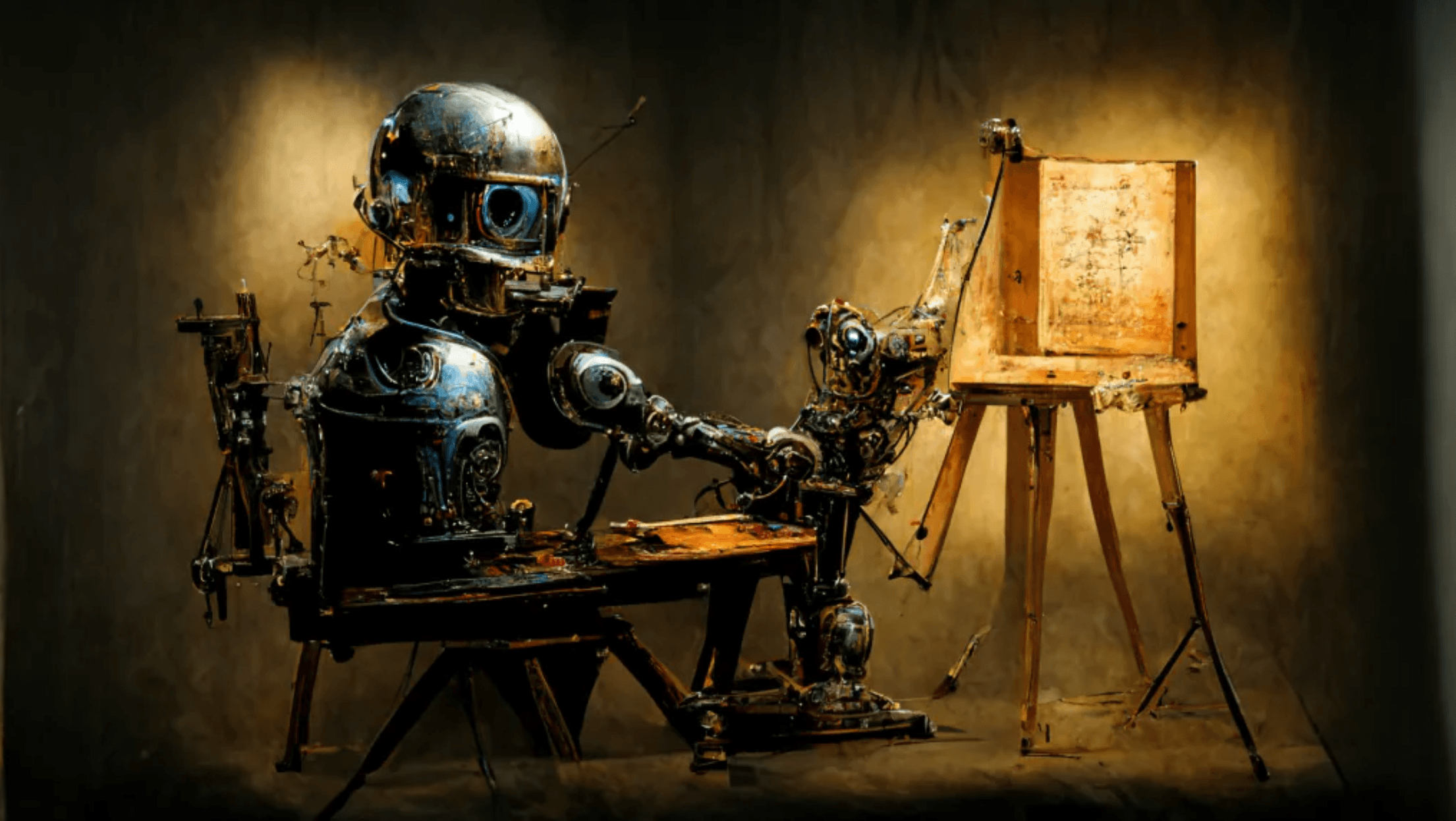Revolutionising Digital Art with AI
MIN3's Journey in Creating an AI Artwork Tool

Create Collections of Unique Artwork at a Fraction of the Cost of Traditional Solutions
Introduction
At MIN3, we are driven by a commitment to create tools that enable our clients to meet their strategic goals effectively. Our AI artwork generation tool is an example of this commitment in action. Developed to address specific needs identified through various client engagements, this tool exemplifies how technology can transform business processes, enhance customer engagement, and drive innovation.
In this article, we will explore the reasons behind the creation of our AI artwork tool, delve into the detailed process of how it was developed, and present a case study showcasing its application for a client, Road Hounds (now Metalcity.io).
The Genesis of the AI Artwork Tool
Crafting the Tool: Our Approach
Case Study: Road Hounds

George Hammick
Product Owner
George has been involved in the crypto space since 2017. Before joining MIN3 as a consultant, George led research efforts at an NFT Studio and co-founded a platform providing support to a community of web3 entrepreneurs.
Speak to GeorgeIntroduction
At MIN3, we are driven by a commitment to create tools that enable our clients to meet their strategic goals effectively. Our AI artwork generation tool is an example of this commitment in action. Developed to address specific needs identified through various client engagements, this tool exemplifies how technology can transform business processes, enhance customer engagement, and drive innovation.
In this article, we will explore the reasons behind the creation of our AI artwork tool, delve into the detailed process of how it was developed, and present a case study showcasing its application for a client, Road Hounds (now Metalcity.io).
The Genesis of the AI Artwork Tool
Our journey began with a clear objective: our clients needed a way to create collections of unique, themed images that aligned with their brand identity and were desirable enough to be collectible. Whether for digital membership cards or tokenised goods, each image needed to be distinct yet coherent within a larger theme.
We noticed a growing demand from our clients for striking image collections that could enhance their brand presence and engage their customers in new and innovative ways. After assessing various options, we determined that AI was a feasible solution due to its capability to generate diverse and high-quality images efficiently.
By developing a tool of our own, we could ensure that the collections of images were tailored precisely to our clients' needs. This approach allowed us to control the creative process, implement specific brand guidelines, and add unique elements that resonated with our clients' audiences.
Beyond just creating visually appealing images, our clients wanted to involve their customers in the creative process. This involvement was aimed at:
- Developing a compelling and engaging user experience.
- Fostering a sense of collaboration and deeper connection with customers.
- Enhancing brand loyalty and engagement.
Moreover, the process itself needed to serve as a marketing tool to attract new customers. The challenge was to deliver all these benefits at scale, efficiently, and cost-effectively — something traditional graphic design approaches could not achieve.
Crafting the Tool: Our Approach
We considered several other methods for building the AI Artwork tool. Initially, we developed a simpler version without the adjective/era-to-artist/style mapping or LLM integration. While this approach was functional, it lacked the depth and variety our clients needed. We also contemplated building our own model entirely, but this option was deemed too costly and time-consuming for our current needs.
Ultimately, we chose a balanced "middle-ground" approach. This decision was driven by the need to provide a robust, feature-rich tool while maintaining efficiency and cost-effectiveness. We wanted to ensure that the tool could deliver high-quality, diverse artwork tailored to our clients' specific needs without the prohibitive costs and time investment of building a model from scratch.
To showcase the tool's capabilities and provide clients with a hands-on experience, we created a version focused on self-portrait creation that anyone can try on our website. This demo allows clients to understand how the user experience might work and how the generated artwork can be based on multiple user inputs. For client engagements, we typically tailor the tool to meet their specific needs, as exemplified by the case study below. In creating this version on our website, we considered the following:
User-Centric Creation
To make the creative process engaging, we designed the tool to allow users to actively participate in creating their artwork. By enabling users to input their own ideas, the tool fostered a stronger bond between the customer and the brand.
Building a Rich Database
We developed a comprehensive database that linked artists and styles with specific adjectives and artistic eras. This database formed the foundation upon which the AI could generate diverse and thematically consistent artwork.
Integrating Advanced AI
The next step was integrating a Large Language Model (LLM) to enhance user prompts. Using ChatGPT via the OpenAI API, the LLM recommended artists or styles based on user input, ensuring that the generated artwork was both relevant and imaginative.
Implementing Text-to-Image AI
The refined prompts from the LLM, combined with additional fine-tuning parameters, were then used as input for a text-to-image AI tool, specifically Stable Diffusion. This tool generated the initial artwork.
Adding the Final Touches
To ensure the artwork was both unique and aligned with our clients' needs, we added final touches such as:
- Consistent picture frame assets applied to all portraits.
Random "traits" inspired by art motifs, such as paint splashes or iconic objects, with varying degrees of rarity.
These enhancements not only make the artwork more collectible but also support the formation of customer "tribes" and can act to drive secondary market sales.
Case Study: Road Hounds
One of the most interesting applications of our AI artwork tool was developed in partnership with Flipside Group for Road Hounds (now Metal City), a next-generation rock music community. Road Hounds provides a digital space for global rock enthusiasts to support emerging talent. The client approached us with a need to create a unique and engaging membership experience that would resonate with their audience and reflect the rebellious spirit of rock music.
Understanding the Client's Needs
Road Hounds wanted to issue digital membership cards as NFTs on a blockchain, ensuring each card was unique and memorable while maintaining a strong brand connection. They sought a solution that would:
- Create visually striking and collectible digital cards.
- Reflect the diverse and eclectic nature of rock music.
- Engage their community and encourage active participation.
- Drive secondary market activity through the collectibility of the cards.
Creating Unique Membership Experiences
To meet these needs, we developed a bespoke version of our AI-generated artwork tool specifically for Road Hounds. Each Road Hounds member receives a unique digital membership card upon joining, issued as an NFT.
Merging Rock Music and AI Innovation
Rock music has a history of pushing visual boundaries. Road Hounds continues this tradition by utilising AI to create album cover-inspired images. Each image features a Road Hounds frame with a vinyl record and includes one of seven dog breeds: Irish Wolfhound, Bloodhound, Afghan Hound, Basset Hound, Doberman, German Shepherd, or Great Dane.
Exploring Themes and Genres
The tool contextualises each dog within an album cover image, aligning it with one of seven rock genres: Classic Rock, Blues Rock, Heavy Metal, Death Metal, Southern Rock, Progressive Rock, or Cyber Punk. These images explore themes of rebellion, individuality, and nonconformity.
Enhancing Collectibility with Traits
Random traits inspired by vinyl collecting are assigned to the digital membership cards, such as different conditions of the album sleeve, "Explicit Content!" warning stickers, and ultra-rare OBI strips from Japanese records. These traits, varying in rarity, help create community subgroups and drive secondary market activity.
Discover the Collection
The full Road Hounds collection is available on OpenSea: https://opensea.io/collection/road-hounds-oh-subscription

George Hammick
Product Owner
George has been involved in the crypto space since 2017. Before joining MIN3 as a consultant, George led research efforts at an NFT Studio and co-founded a platform providing support to a community of web3 entrepreneurs.
Speak to GeorgeHow can our AI Artwork Creation Tool be used to benefit your business?
You can use our easy-to-integrate tool to produce images at a fraction of the time and cost, and with greater variety and creativity, than is possible when engaging with traditional graphic designers. The artwork will be unique, but clearly connected to your brand identity. Using our tool you can allow your loyal customers to have a hand in creating the imagery, via a compelling (even addictive) user experience. Adding random rare traits make the artworks desirable and collectible. This can be an effective marketing tool - broadening your business' reach as well as the depth of engagement and the stickiness of your interaction with your customers.
Services
We provide end-to-end services
We help clients to develop strategies that beat the competition. Closely collaborating with our clients, we use emerging technology like AI and blockchain to drive positive disruption, unlocking new possibilities for sustainable growth.
Last login: Tue Sep 16 15:51:29 on console guest@min3 ~ % ls -------Services---------- Business Strategy Brand Identity Blockchain Smart Contract Development Artificial Intelligence (AI) Regulation & Risk Management UX Design Web & Mobile Apps Change Management --------------------------
Explore more research
We delve deeper into emerging trends to analyse their potential impacts and future directions. You can access the growing list of research documentation below.